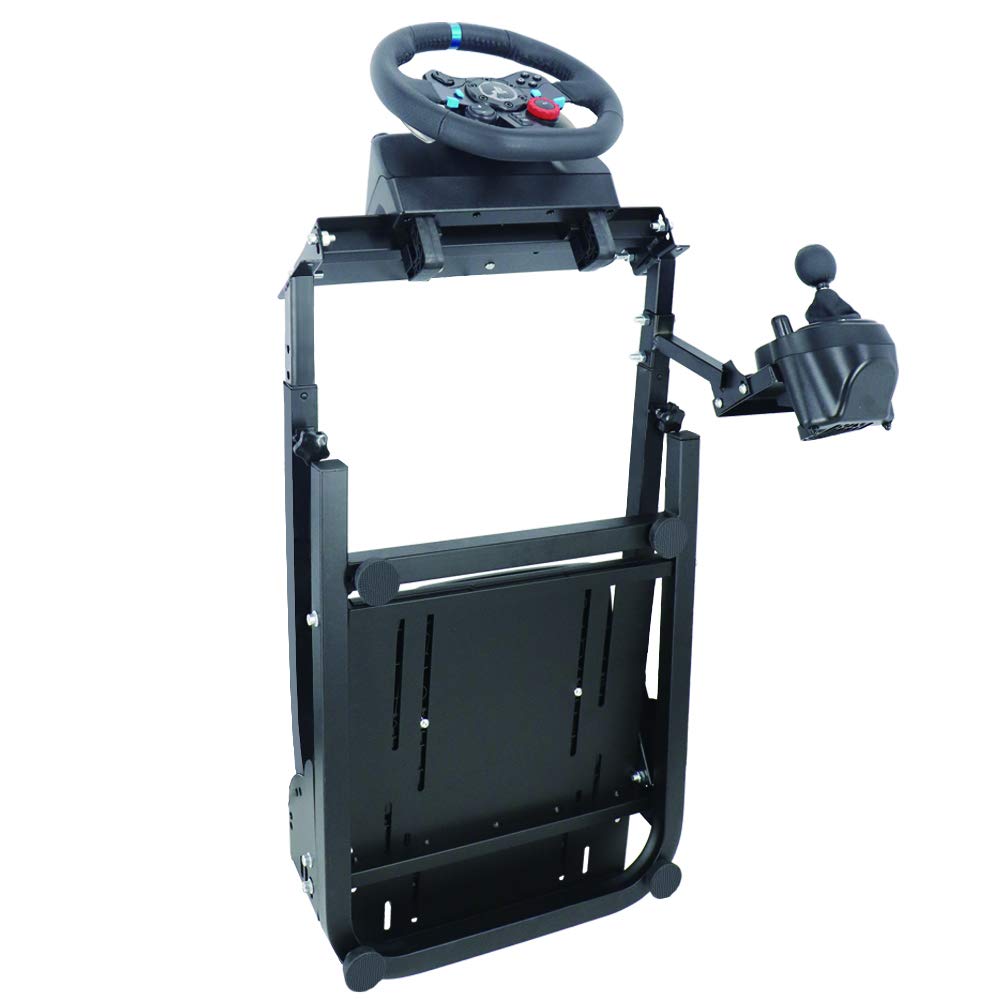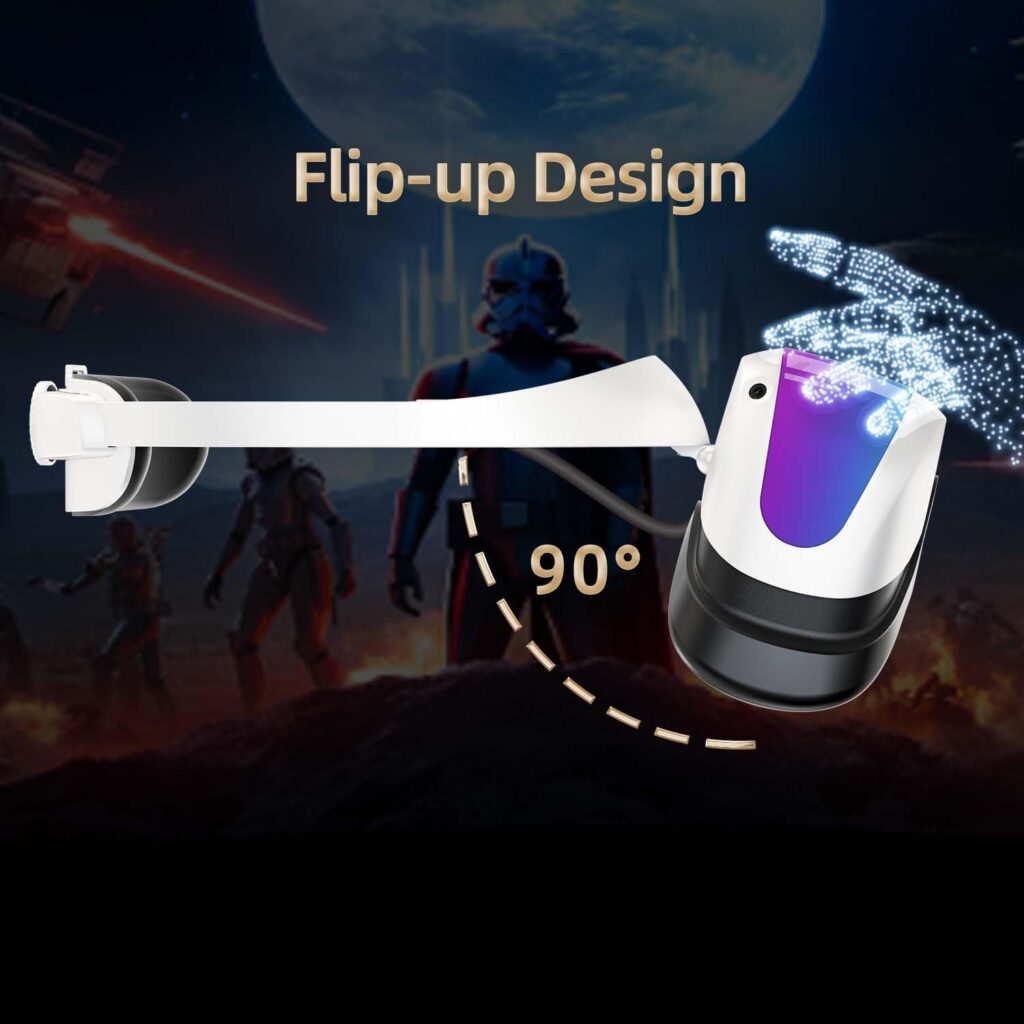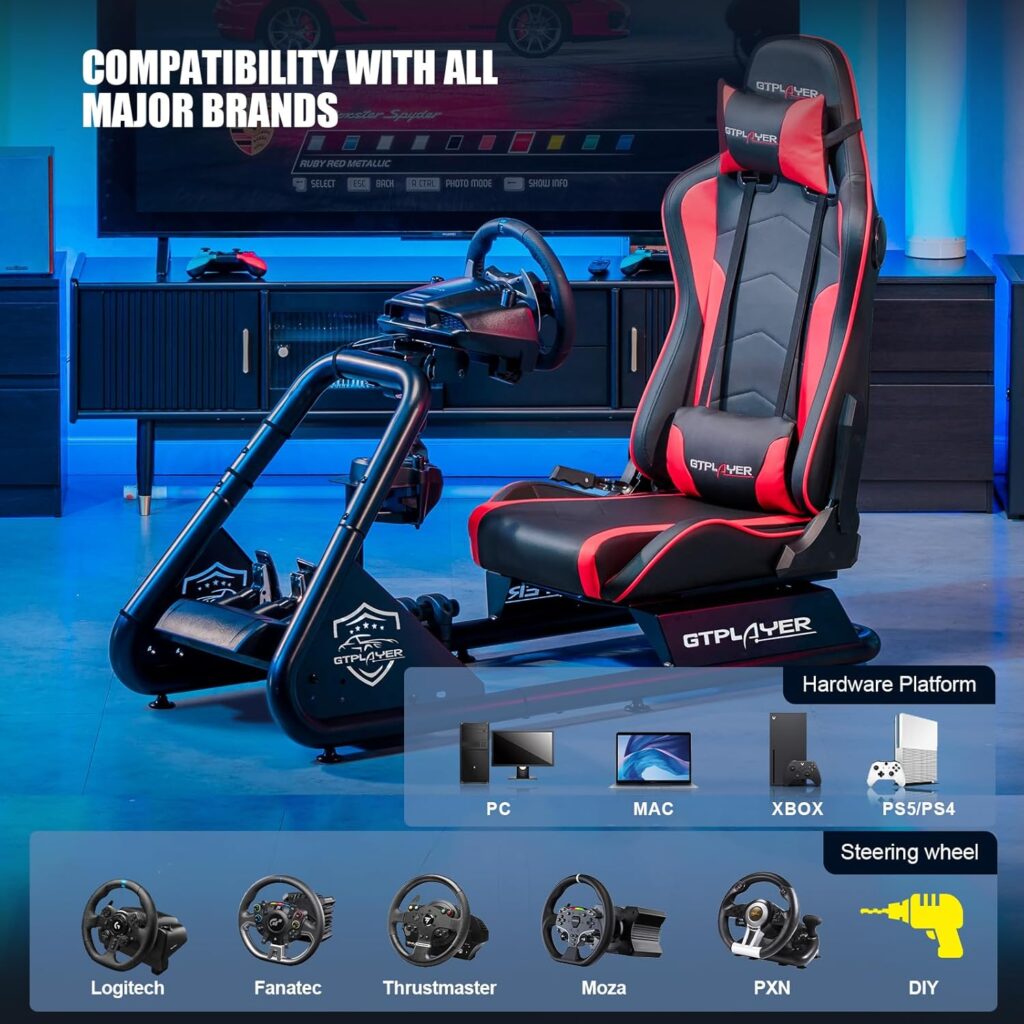So you think you've got what it takes to stop on a dime in virtual racing? Well, buckle up and get ready to have your braking skills put to the test.
In this discussion, we will uncover the secrets behind mastering braking techniques that will not only enhance your control on the virtual track but also shave off precious seconds from your lap times.
From adjusting brake balance to understanding braking points and analyzing track conditions, we will delve into the world of advanced braking techniques that can make all the difference in virtual racing.
Get ready to take your braking game to a whole new level.
Key Takeaways
- Adjusting brake balance and calibrating pedals are essential for improved control and faster lap times.
- Understanding braking points and finding braking reference points are crucial for consistent and precise braking.
- Mastering trail braking helps minimize understeer and optimize corner entry.
- Analyzing track conditions and timing braking points based on visual cues and telemetry data is necessary for optimal performance.
Adjusting Brake Balance
Adjusting brake balance is a critical technique in virtual racing that allows you to finely tune the distribution of braking force between the front and rear wheels. By shifting the brake balance towards the front, you can increase stability and reduce oversteer. On the other hand, shifting it towards the rear can increase rotation and reduce understeer. These adjustments are often made based on track conditions, tire wear, and changes in fuel load during a race.
When it comes to braking techniques in virtual racing, two common methods are threshold braking and trail braking. Threshold braking involves applying maximum brake input just before the wheels lock up, allowing you to achieve the maximum deceleration possible without losing control. On the other hand, trail braking involves gradually releasing the brake as you enter a corner, allowing for a smooth transition from braking to cornering.
To effectively adjust brake balance, it's important to understand the impact it has on vehicle handling. By experimenting with different brake balance settings, you can find the optimal setup for different cars and driving styles. This can lead to improved control and ultimately, faster lap times.
Calibrating Pedals
When it comes to optimizing your braking techniques in virtual racing, one crucial step is calibrating your pedals to ensure accurate and consistent braking responses. Proper calibration involves setting the range and sensitivity of the brake pedal and eliminating any deadzones or inconsistencies in the brake signal. By calibrating your pedals, you can achieve maximum brake pressure and enhance your braking technique for better control on the virtual track.
One way to calibrate your pedals is by using a load cell. A load cell is a device that measures the force being applied to the brake pedal. By adjusting the load cell settings, you can fine-tune the sensitivity of the pedal and ensure that the braking response matches your input accurately. This allows for a more realistic and immersive experience while racing.
To help you understand the importance of calibrating your pedals, here is a table highlighting the benefits:
| Benefits of Calibrating Pedals |
|---|
| Accurate and consistent braking responses |
| Enhanced control and precision during braking maneuvers |
| Improved understanding of braking points on the track |
Understanding Braking Points
When it comes to understanding braking points in virtual racing, there are a few key points to keep in mind.
First, mastering optimal braking techniques is crucial for achieving faster lap times and maintaining control.
Second, finding reliable braking reference points on the track will help you consistently hit your braking zones with precision.
And finally, mastering the art of trail braking, where you gradually release the brakes while turning into a corner, will give you a competitive edge in virtual racing.
Optimal Braking Techniques
To optimize your braking technique in virtual racing, it's essential to understand the concept of braking points. These points help you maximize your braking performance by allowing you to apply the right amount of pressure to the brake pedal at the right time.
Here are three key factors to consider when determining your optimal braking technique:
- Grip Level: Adjust your braking technique according to the changing grip level during braking. As the grip decreases, you need to apply less force on the pedal to avoid locking up the wheels.
- Trail Braking: This technique involves holding onto the brake pedal deep into corners to maintain front tire load and reduce understeer. Remember, trail braking is primarily a control method, not for slowing the car down.
- Weight Transfer: Understanding weight transfer is crucial for effective braking. As you apply the brakes, the weight of the car shifts forward, putting more load on the front tires. This can affect the balance and stability of the car, so it's important to manage it properly.
Finding Braking Reference Points
To further enhance your braking technique in virtual racing, let's now explore the crucial aspect of finding your braking reference points, which are essential for achieving optimal performance on the track. Finding the right braking point requires a combination of visual cues and an understanding of track conditions. By identifying braking zones on the track, you can calibrate your pedals for consistent braking. It's also helpful to utilize telemetry data from apps like VRS to review and analyze your braking efforts during practice. To help you visualize this process, here's a table that shows different braking reference points based on track conditions:
| Track Conditions | Braking Point |
|---|---|
| Dry track | Brake just before the turn-in point |
| Wet track | Brake earlier and more gently |
| Slippery surface | Brake even earlier and with lighter pressure |
| Uneven surface | Adjust braking point based on surface changes |
| Changing grip | Continuously adapt braking point throughout lap |
Mastering Trail Braking
To truly master trail braking and understand the nuances of braking points in virtual racing, it's essential to grasp the concept of holding onto the brake pedal deep into corners, maintaining front tire load, and minimizing understeer. This technique allows you to maximize control and optimize your corner entry.
Here are three key factors to consider when mastering trail braking:
- Modulate brake pressure while steering: Practice the skill of smoothly and precisely adjusting brake pressure while steering to keep within the limits of available grip. This will help you maintain stability and prevent any sudden loss of control.
- Recognize braking points: Develop the ability to identify the optimal points on the track to apply brakes. Pay attention to visual cues and track conditions that can guide you towards achieving optimal trail braking.
- Review and refine technique: Utilize the VRS app telemetry to analyze your braking efforts during practice sessions. This data will allow you to review and refine your trail braking technique, ensuring that you're maximizing control and minimizing tire wear.
Identifying Braking Zones
Identify visual markers such as brake markers, curbs, or track features as reference points for efficient braking in virtual racing. These markers serve as important cues to help you determine the ideal braking zones on the track. Look for trackside objects or markers that can act as reliable indicators, such as signs, trees, or banners. These visual cues can help you establish consistent braking points and maintain control of your sim racing setup.
When identifying braking zones, it's crucial to analyze telemetry data. This data provides valuable insights into your braking performance and can help you identify optimal braking zones. Pay attention to brake markers on the track, such as painted lines or boards indicating where to start braking. These markers are strategically placed to guide you and assist in maintaining a smooth and efficient race.
Remember to adjust your braking points based on various factors, including car characteristics, weather conditions, and track layout. These factors can significantly impact your available grip and the effectiveness of your braking. By adapting your braking zones accordingly, you can optimize your braking technique and improve your overall performance on the virtual track.
Identifying braking zones is a fundamental skill in virtual racing. By honing this skill, you can ensure precise and controlled braking, setting yourself up for success in every braking zone.
Analyzing Track Conditions
When analyzing track conditions in virtual racing, it's crucial to take into account various factors that can affect your braking technique and overall performance. By understanding and analyzing these conditions, you can make informed decisions and optimize your braking strategy.
Here are a few key factors to consider:
- Sound of Tires: Pay attention to the sound of your tires just before lock-up. This will help you determine the maximum braking force you can apply without losing control. Avoid braking harder than this threshold to maintain stability and prevent skidding.
- Changing Grip Levels: Grip levels on the track can change throughout a race due to factors like temperature and tire wear. Adjust your braking technique accordingly, being mindful of any changes in grip levels during braking. This will ensure that you maintain control and maximize your braking efficiency.
- Visual Cues: Analyze the track for visual cues that can indicate optimal braking points. Look for markers like brake boards, curbs, or other landmarks that can help you identify the ideal spot to release the brake and enter a corner. By understanding these visual cues, you can approach each corner with precision and confidence.
Timing Braking Points
Timing your braking points is a critical skill that will help you achieve optimal speed and control as you navigate through corners in virtual racing. To effectively time your braking points, you need to anticipate and identify visual cues and track conditions. As you gain experience, you'll develop a sense of when to apply the brakes based on your familiarity with the track and the specific corners.
One important factor to consider is the changing grip level during braking and varying track conditions. The force feedback from your racing wheel can provide valuable information about the grip level. Pay attention to how the wheel feels as you brake and adjust your braking points accordingly.
Another helpful tool in timing your braking points is the VRS app telemetry. This app allows you to review and analyze your braking efforts, giving you insights into your braking points and helping you improve your timing. By studying the data provided by the app, you can identify areas of improvement and make adjustments to your technique.
Remember to practice recognizing braking zones on the track. By consistently practicing and refining your timing, you'll develop a better understanding of when to brake for each corner. With time and experience, you'll be able to stop on a dime and maintain optimal speed and control throughout your virtual races.
Trail Braking Techniques
To further enhance your braking skills and improve your performance in virtual racing, let's dive into the art of trail braking.
Trail braking is a technique that involves gradually releasing the brakes while entering a corner. This technique allows you to carry more speed into the corner while maintaining control over the car's balance.
Here are three key elements to consider when using trail braking techniques:
- Smooth Transition: As you approach a corner, begin by applying the brakes firmly. As you start to turn into the corner, gradually release the brakes while maintaining a smooth and controlled transition. This will prevent any sudden weight transfer that could destabilize the car.
- Balance and Control: Trail braking requires a delicate balance between braking and steering inputs. As you release the brakes, be mindful of the car's weight distribution and make small adjustments to the steering to maintain control and prevent understeer or oversteer.
- Adaptability: Trail braking techniques aren't a one-size-fits-all solution. The amount of trail braking required will vary depending on factors such as the corner radius, speed, and car setup. Experiment with different approaches and adjust your technique accordingly to find the optimal balance for each corner.
Threshold Braking Techniques
To become a master of threshold braking techniques in sim racing, you must perfect the delicate art of applying maximum brake pressure just before your tires lock up. This technique allows you to exploit nearly 100% of the available grip from your tires, giving you the ability to stop on a dime.
It requires practice and skill to achieve the delicate modulation and feel needed for threshold braking, especially in non-downforce cars. In these cars, you can rely on feedback sources such as tire sound, visual lock-ups, and force feedback to find the threshold.
It's crucial to train consistent brake pressure into your muscle memory for repeatable threshold braking. Additionally, you need to adjust your braking technique according to changing grip levels during the braking process.
Heel-and-Toe Downshifting
Mastering the art of heel-and-toe downshifting is crucial for achieving smooth gear changes and maintaining stability while entering corners at high speeds in virtual racing. This advanced technique requires precise coordination between your feet and hands to execute flawless downshifts while simultaneously braking.
Here are three key points to help you understand the importance and execution of heel-and-toe downshifting in virtual racing:
- Technique: Heel-and-toe downshifting involves using the ball of your foot to brake while blipping the throttle with your heel to match the engine speed with the lower gear. This ensures a seamless transition and prevents any jarring motions that can disrupt the balance and stability of your car.
- Fluid Transitions: By mastering heel-and-toe downshifting, you can seamlessly shift down to a lower gear while entering a corner, allowing you to maintain power and control throughout the maneuver. This technique minimizes the risk of losing traction and maximizes your ability to accelerate out of the corner.
- Practice Makes Perfect: Like any skill in virtual racing, mastering heel-and-toe downshifting requires practice. Spend time honing your timing and coordination to ensure smooth gear changes. Start by practicing in a controlled environment and gradually increase the complexity of the situations you encounter to build confidence and proficiency.
Incorporating heel-and-toe downshifting into your virtual racing repertoire will elevate your performance and give you a competitive edge. With practice and dedication, you'll soon be executing flawless gear changes and conquering corners with ease.
Advanced Braking Techniques
Now that you've mastered the basics of braking, it's time to take your skills to the next level with advanced techniques.
Trail braking is a technique that allows you to maintain control from corner entry to apex by gradually releasing the brakes as you approach the turn. This technique requires precise modulation and can help you optimize your braking points for faster lap times.
Additionally, mastering threshold braking is crucial for maximizing your braking performance. By applying maximum brake pressure without locking up the tires, you can exploit nearly 100% of the available grip from your tires and shave off precious seconds on the track.
Trail Braking Techniques
Trail braking is a technique used in virtual racing that involves maintaining brake pressure deep into corners to manage load on the front tires and reduce understeer. It requires adjusting brake pressure while steering to stay within the available grip limits.
To master trail braking, you need to develop a feel for maximum brake pressure just before the tires lock up. Delicate modulation of brake pressure and steering inputs is crucial.
Analyzing your braking efforts using the VRS app telemetry can help fine-tune your trail braking technique. With practice and repetition, you can develop the timing and feel for applying maximum brake pressure during trail braking.
Corner Entry Braking
As you continue to refine your braking techniques in virtual racing, it's time to explore the intricacies of corner entry braking, taking your skills to the next level.
Corner entry braking requires delicately modulating brake pressure to reach threshold braking, and it's a technique that requires practice to master. One important aspect to pay attention to is the sound of your tires just before lock-up. Avoid braking harder than that to maintain control during corner entry braking.
Consistency is key for corner entry braking, regardless of speed and circuit conditions. It's also important to adjust your braking technique and pressure according to the changing grip level during corner entry to optimize braking efficiency.
Utilize the VRS app telemetry to review and analyze your corner entry braking efforts during practice for improvement.
Threshold Braking Mastery
To truly master the art of threshold braking, you must learn to delicately exploit nearly 100% of your car's available tire grip through practice and precise modulation. This advanced braking technique allows you to stop on a dime in virtual racing.
Here are three key aspects of threshold braking mastery:
- Non-downforce cars: These vehicles require careful modulation and reliance on feedback sources such as tire sound, visual cues, and force feedback to reach threshold braking. Paying attention to these feedback sources will help you maximize your braking performance.
- Downforce cars: Slamming the brakes initially is crucial for quickly reaching threshold braking. As speed decreases and downforce comes off, you need to bleed off the brakes to maintain control. This technique ensures optimal braking efficiency.
- ABS-equipped cars: If your virtual racecar features ABS, take advantage of the significant vibration felt through the wheel with force feedback. This feedback makes it easier to achieve and maintain threshold braking.
Mastering threshold braking will enhance your virtual racing skills and enable you to stop on a dime. Practice and repetition are key to making these techniques second nature.
Frequently Asked Questions
What Is the Best Technique for Braking?
The best technique for braking in virtual racing is to find the optimal balance between brake pressure and pedal modulation. It's important to apply enough pressure to slow down the car efficiently, but also to modulate the pedal smoothly to avoid locking up the tires.
Additionally, trail braking, which involves gradually releasing the brakes while turning into a corner, can be a useful technique for maintaining control and maximizing cornering speed.
ABS systems can help, but mastering threshold braking without relying on ABS is still more efficient.
How Do You Brake in Sim Racing?
So, you want to know how to brake in sim racing, huh? Well, let me tell you, it's not as easy as it looks.
You'll need to master the art of trail braking, where you gradually release the brakes as you enter a corner.
And don't forget about threshold braking, where you push those pedals to the limit without locking up the wheels.
Oh, and if you really want to impress, try some heel and toe braking to smoothly downshift while braking.
It's all about finesse and precision, my friend.
Good luck out there!
What Are the Braking Techniques in Racing?
Braking techniques in racing involve mastering the art of trail braking, threshold braking, and cadence braking.
Trail braking allows you to smoothly release the brakes while turning into a corner, maintaining control and maximizing speed.
Threshold braking is all about pushing the brakes to the limit, utilizing the maximum grip available from your tires.
Cadence braking is a technique used in slippery conditions, where you alternate between applying and releasing the brakes to maintain stability.
These techniques are essential for stopping on a dime in virtual racing.
What Are the 5 Stages of Braking?
To stop on a dime in virtual racing, you need to master the 5 stages of braking.
Firstly, threshold braking is key, where you modulate brake pressure to the point just before lock-up.
Secondly, trail braking comes into play, as you maintain brake pressure into corners for better control.
Lastly, be aware of the braking zones on the track, adjusting your brake pressure to changing grip levels.
With these techniques, you'll be stopping on a dime in no time.
Conclusion
So there you have it, mastering braking techniques is absolutely essential for success in virtual racing.
By adjusting brake balance, calibrating pedals, and understanding braking points, you can optimize your performance on the track.
Did you know that implementing these techniques can improve lap times by up to 2 seconds? That's a significant improvement that can make all the difference in a race.
So get out there, practice, and start stopping on a dime in virtual racing!




